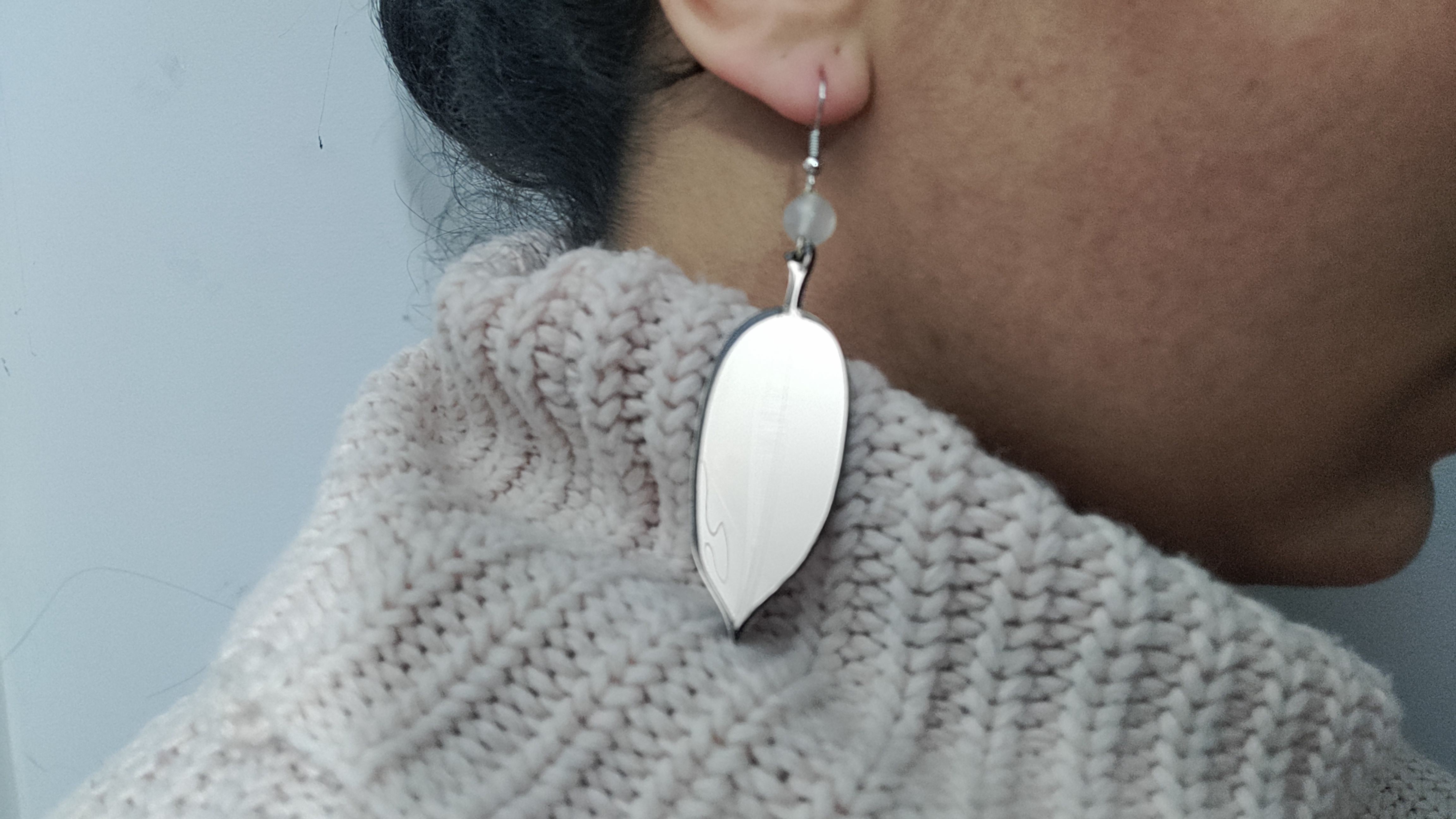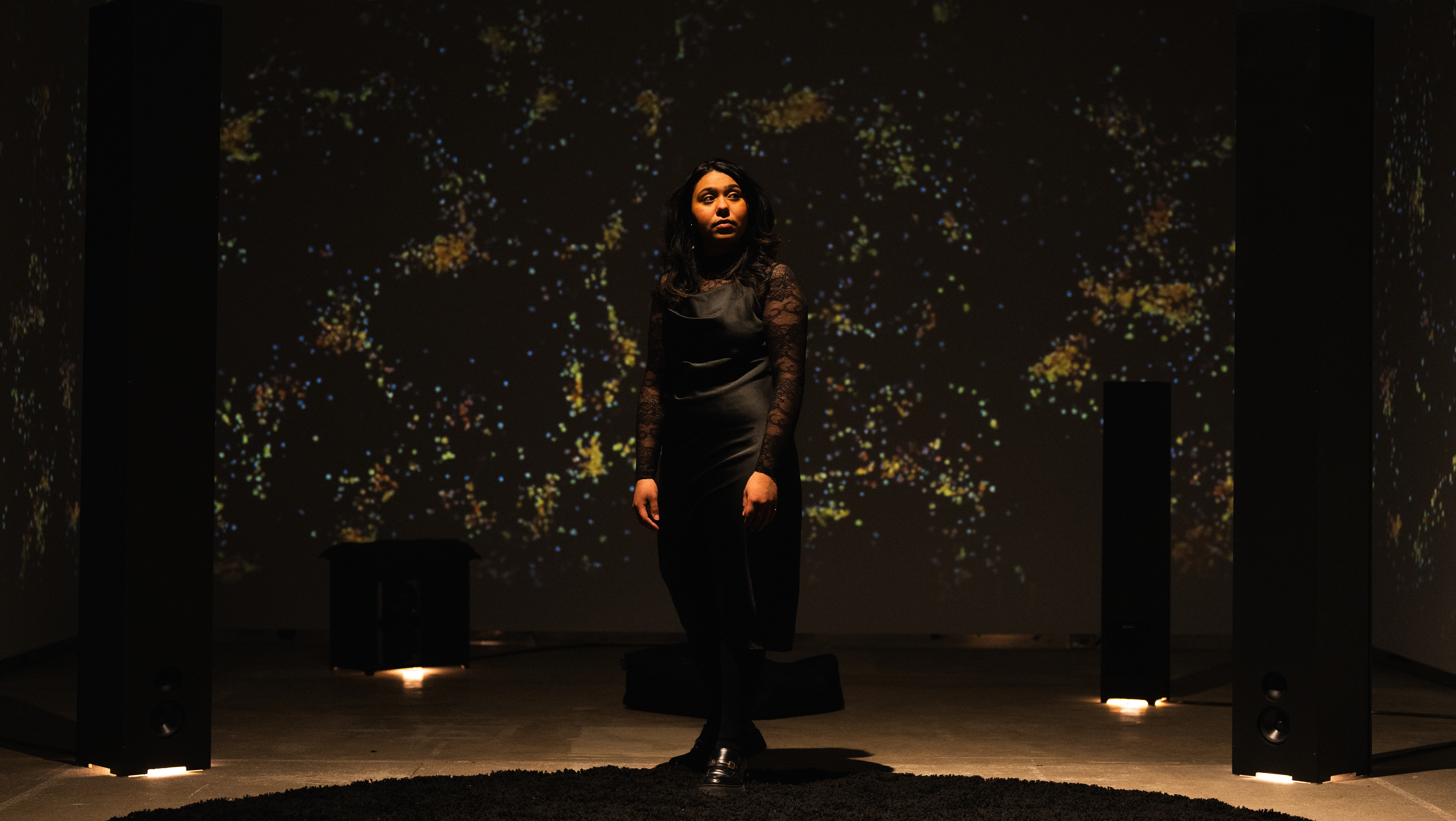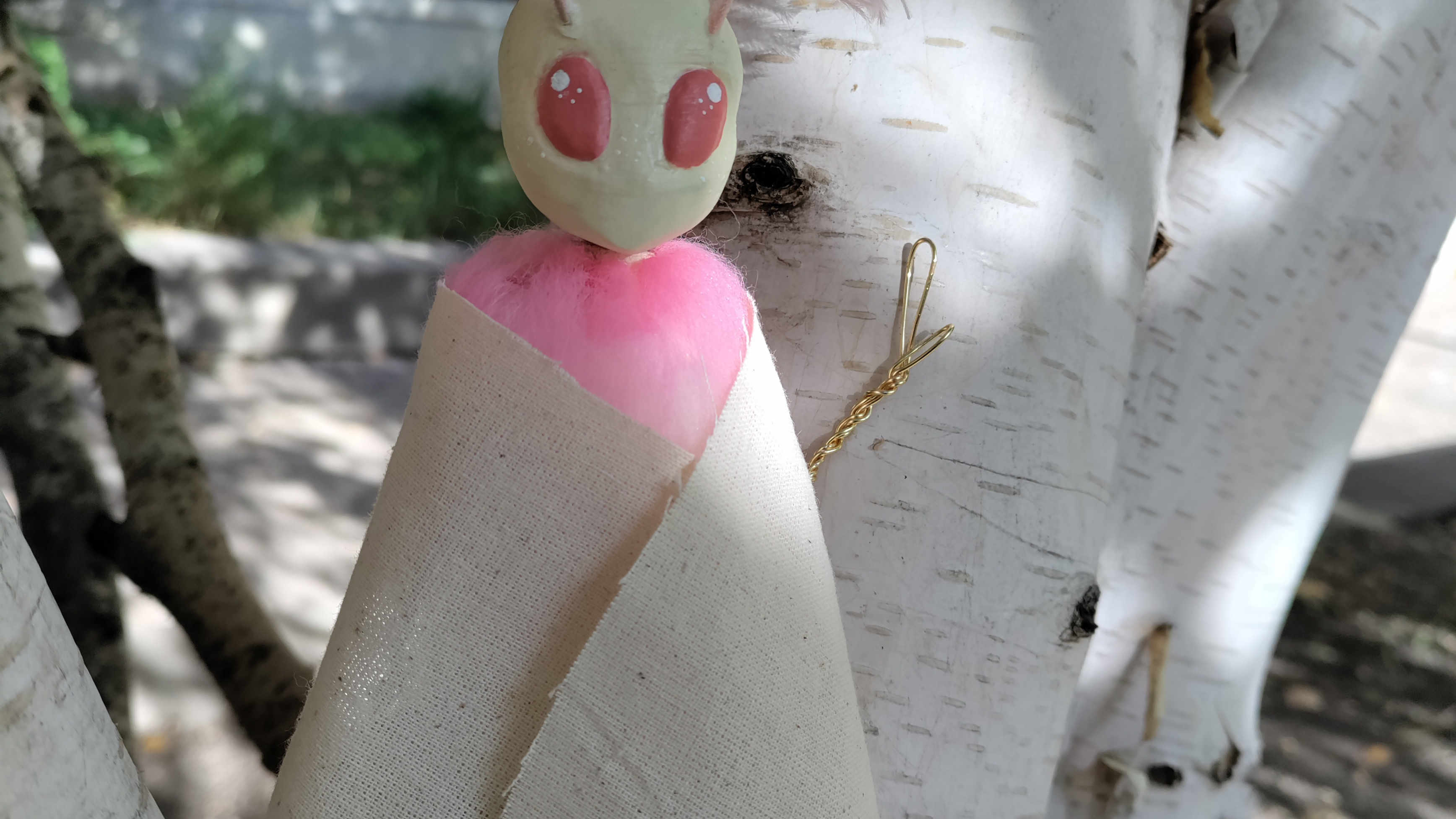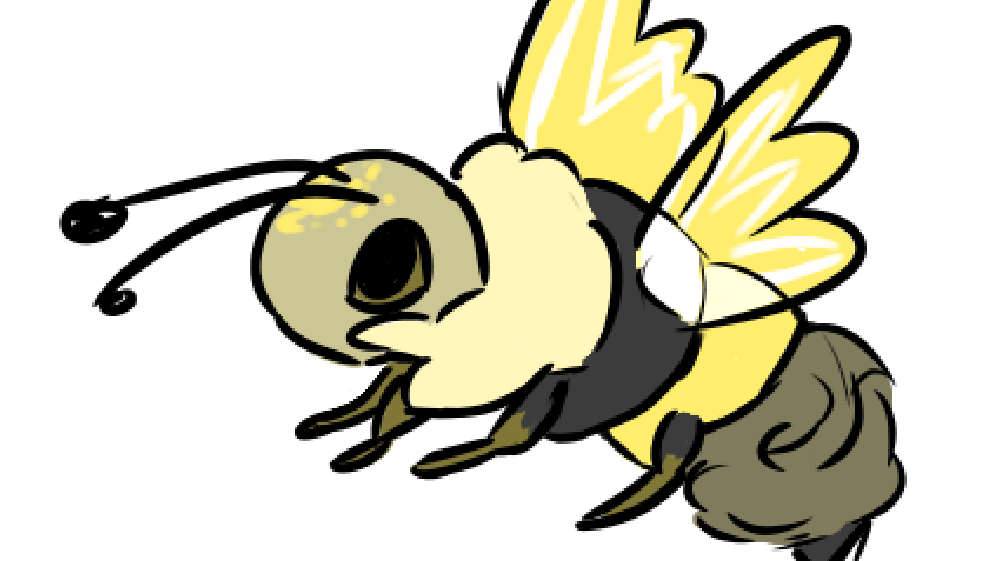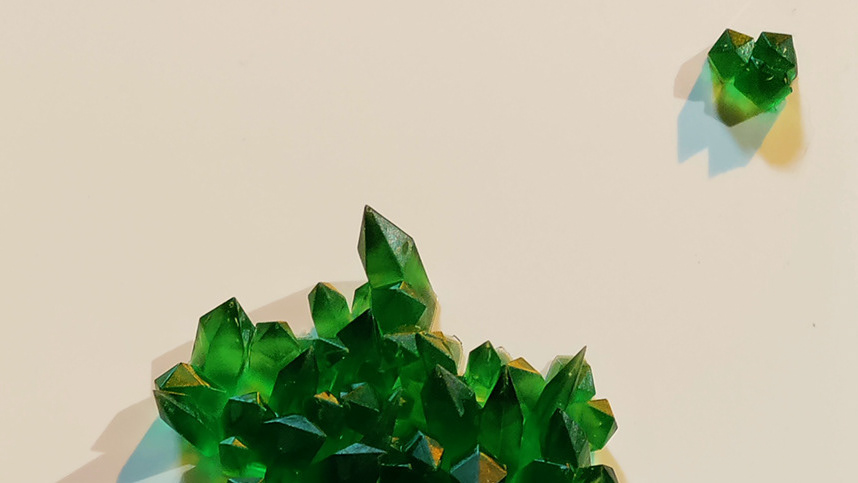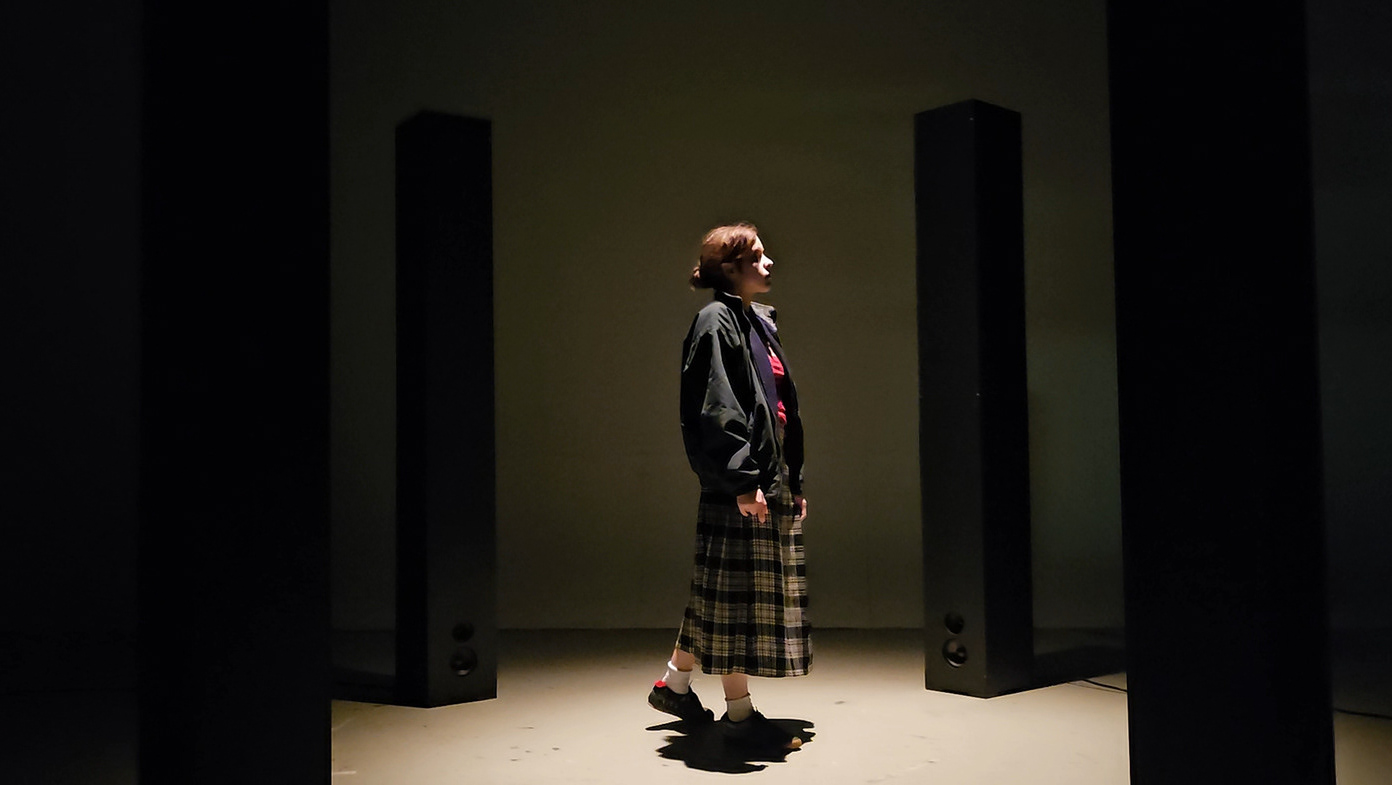Angelina Almanza. “Wall Garden”
Introduction:
Throughout the term, I’ve been finding it harder and harder to ground[1] myself to what’s happening around me. The endless need to scroll the internet to satiate my hunger whilst drowning had started to become beyond exhausting, yet being alone in my mind makes me feel more trapped than ever. My compulsive spending on objects that brought happiness was becoming something that could have lasting effects if I didn’t get it under control. Peoples’ words have become glass under my skin. In times like these, place begins to blur, and space becomes incomprehensible. My actions seem meaningless, and existence without purpose.
The point of this project was to combat the trapped feeling. It was to embody the inner atmosphere I experienced whilst I was in the middle of the reeds. It was to bring home how I felt as I finally started to wake up. It was to bring life to the gray room I’m constantly in - to aid in pulling me out of the boiling fears.
This was to be a Garden in a situation where it shouldn’t flourish, and one that did anyway. It fought the crushing force of gravity and glows in its achievement.
The Process:
I must admit, this project has gone through several concepts and started completely different from the final.
I think the first ideas came from watching a YouTuber as she made giant installations that lived within the space. I first discovered her through the video documenting her process of creating a giant mushroom environment inside a building – one of them being gigantic and having a nook for curling into[2]. I wanted so badly to make something like this (to have a little place I could retreat to), but live in a rental that we had planned on moving out of shortly, so an installation would either have to be trashed after its construction or could damage the room. I also debated on constructing it outside, but considering the materials I had in mind, I didn’t think making it outside in the weather would have gone well.
My next idea was to be inspired by another one of her projects. In another video, she made a giant whale that was suspended in the air[3]. I think that it was around this point I realized I wanted to make something that lived within a space – something that would either elevate it or make it more enchanting. The cool thing about making a giant suspended ethereal being, was that I could construct it in my work area and take it to a place outside where it could temporarily live when I was done with it. The inside was to be hollow, so I could easily place electronics inside of it that could be manipulated in the outermost shell.
This plan however, fell apart. I don’t have experience with making giant sculptures like this, and the concern for materials was again something I began to consider. I was having a hard time figuring out what animal to create and was only able to envision a whale – which was not something I wanted to do. I tried to draw inspiration from Nihonga-style paintings, as the style seemed to have the ethereal concept I was going from, but trying to translate the style to sculpture wasn’t working. So, I pivoted on the concept again and tried to focus on how to elevate space.
It was around this time that I turned to other artists' works, and made a Pinterest board[4] that highlighted the main features I wanted to include. I knew I wanted to use LEDs, was hoping to incorporate solar panels, and wanted to make an installation that would live outside. I still wanted to make something ethereal, so things that hung above people as they entered the space were something that came to mind. Thus, I came up with a new design after doing research on Yayoi Kusama and her Infinity Mirrored Room – The Souls of Millions of Light Years Away[5].
The idea was to be butterflies that would hang in a very specific part of the forest. They would each be powered by solar panels, and would light up when the sun went down. I had hopes that I would be able to construct it without using any code at all, as I didn’t want to leave batteries (the forest I had in mind was a part of the green belt, so I didn’t want to leave anything that could in any way ruin the environment) or an Arduino (in the event that it could be ruined by moisture) in the location.
I thought that the best way to do so would be to take apart solar lights from the dollar store and use the needed components. I had removed the two solar panels, drew up a schematic so I would know how to recreate the circuit afterwards and test connected them to LEDs; only to find that they didn’t prove my hypothesis correct. The LEDs I would be using would not be powered by the two solar panels I had. This led me to believe that while I had removed the panels I had broken them, so I decided to test them with a different component I had.
The speaker proved to be a much better way to test the solar panels – as there would be a reaction in varying volume rather then a barely visible shift in lighting. Through my testing I found that I didn’t break the panels, but that they worked in a way similar to a photoresistor and would only allow power if there was sun[6]; and even with the rechargeable battery connected in series would not light up in the dark. The reason for the LEDs lighting up in the dollar store circuit relied upon the four-pronged transistor, and I had detached the panels as I was having a hard time understanding the component in the first place[7][8]. As such, I pivoted again and decided to try my second last idea.
Solar Butterflies V2 was to combine the butterflies from V1 and the newly learned construction of a parallel circuit from my Galaxy skirt for class Emerging New Media. Instead of hanging in the air, the butterflies were to all be resting on the trunk of a tree and glowing in a pulsating manner. Looking on it now, I think the idea was inspired by monarchs as they rested in the winter?
[6] Which really should have been obvious, but I guess I hoped it would be different, and that the solar panels would collect energy in light and release it in the dark
[7] In Intro to Tangible we only had three-pronged transistors, and research for the component wasn’t bearing any results
[8] Looking back now, I think I’d like to revisit the Solar butterflies again in the future, as I think I realize how to fix where I went wrong
Andrew Winning, “Holding On” Huffpost, Huffington Post, 30 August, 2016, https://www.huffpost.com/entry/mona rch-butterfly-habitat-damage-in-mexico_n_57c09f18e4b085c1ff295bd1. Accessed April. 2021.
I would have the Arduino at the base of the tree, and the 5V and Ground lines in parallel with the LEDs in the body of the butterfly connecting the two. Also, there were to be multiple power lines that would pulsate at different times via different digital pins.
I don’t remember how, but following the planning for this and creating the basics of the code I changed my mind again. I think it was at this point that I was having the hardest time creating, and had sunk deep into my mind.
I remember that I had gone on a walk to the location for Solar Butterflies V2 to finalize the sketches before I would work on making the many butterflies I would use. It was on the way back that I had walked by these tall reeds that grew by a flooding lake, and needed to be in them.
I took my time, parting the stalks and watching every single step I took, trying my hardest not to bend the trunks of the towering plants. And then I stood in the center of them and just existed.
I’m struggling to find the words to describe it – it was like I was so small, but I was a part of something. Like it was okay to be there. It was okay to drown in the sky, it was okay to breathe, it was okay to just listen to everything around me. My being there wasn’t bad, and I got to where I was while respecting where I was and what was around me. It felt like things could be okay.
I actually took a video after this, and wanted to share it! There was a plane that was flying over at the moment though, so you can’t hear what I heard until near the end of it
I decided that instead of making something outside and enhance the space there, it was more important for me to make something to capture that feeling. Something that would remind me that I wasn’t trapped, something that would bring more green into my space, something that would be slow and pulsating just like the wind that calmed my heart. And thus I moved onto my final project, Wall Garden.
Inspired by my beautiful circuit project from Emerging new media, I decided to go all out and try and incorporate both non-conventional materials and circuity that was pleasing to look at. Copper tape covered both of these, and I assumed that it could be soldered to the wires that would connect to the LEDs.
I came up with the initial sketch for the copper circuit, and attempted to replicate it on the wall with ribbon, then yarn, then the copper tape when I was satisfied.
Angelina Almanza, Yarn on the wall
The idea was for it to be a closed circuit like my Galaxy Skirt, and to have power and ground connected to each of the ends. I would then place the LEDs in between the two and have wires connect the two paths. After connecting the power to the copper, I tested the connection with one of the flowers that would be used, only to find that the current didn’t flow past a certain point[10].
[10] Not working past a certain point :(
I’m still unsure why this happened. I assume that there wasn’t enough voltage to go throughout the whole circuit, or that there was a disconnect somewhere with the tape path, but without something to check the current I can’t say for certain. Instead of dwelling on it though, I redesigned the circuit after taking apart a breadboard and coming up with a different way to make it parallel.
Angelina Almanza, Copper circuit 2.0
This time the circuit would be slightly different. The path circling the outside would be connected to ground at the starting point, but wouldn’t go to power at the end. Instead, it would be connected via the LEDs from one of the variously designed power lines, thus having multiple parallel circuits like a breadboard[11]!
After assembling the new circuit and testing the new paths with a constant power, I went onto fine tuning my code, before attempting to test it out and find a problem.
I thought I set it up so only one led would be controlled one per pin, which would be a problem as I had created four different pulses, but when I tested it out the LEDs wouldn’t turn on. I turned to the internet for help, and the videos I watched told me to use a shift resistor to control multiple LEDs.[12][13]
I spent some time recreating the videos, but came to the realization that the shift resistor I had wasn’t the same. Keeping what I had seen from their videos in mind, I found a very helpful document online[14] and was able to control the multiple LEDs – though only after changing the way cathodes from being in series to going directly to ground. I tested the connections out in various different ways[15][16], and then went about laying out the moss and fake plants[17].
[15][16]Testing the flowers
[17] The initial Layout
Angelina Almanza, Wall Garden Layout w/ butterflies
I realize now that the real problem was the LEDs being in series in my testing, so there wasn’t enough voltage being distributed throughout. I am however, grateful that I used this opportunity to research more about the shift resistor at my disposal, as I needed it for my final in another class and it can be of use for future projects.
I faced one last problem after finishing assembly. Once the piece was mounted, the connections of the wires grew less stable and the paths were very hit or miss as to when they would work. I suppose that this is the consequence of using copper tape, as well as the effect of gravity. The way I connected the LEDs to the wires caused a few issues too – as they were looped and would flicker. While the looping method works for conductive thread to fabric, or creating a flicker without code, I realize it was unnecessary here and I should have just soldered the LEDs.
Works Cited
Almanza, Angelina. “Contemporary Strategies final insp” Pinterest, N/A, https://pin.it/20XRHsH
HeathenHacks. “Arduino Project #12 | 3 Pins, 32 LEDs, 4 Shift Registers [74HC595]” Youtube, 21 April, 2019, https://www.youtube.com/watch?v=N7CAboD1jU0&t=204s
Mr ElectoUino. “Arduino 74hc595 16 led with 18 effects | arduino led projects” Youtube, 7 February, 2021, https://www.youtube.com/watch?v=lv_L9VjdKYI&t=181s
N/A. SN754410 quadruple Half-H Driver. Texas Instruments, January 2015. Pdf, https://www.ti.com/lit/ds/symlink/sn754410.pdf
小芊枫 XiaoQianFeng. “How To Make A Fairy Mushroom And Tree House with Waste Cardboards?” YouTube, 14 May, 2020, https://www.youtube.com/watch?v=4ylBSkyIs4A
小芊枫 XiaoQianFeng. “I Made Flying Whale with Wasted Cardboard| DIY with Wasted Materials” Youtube, 8 February, 2021, https://www.youtube.com/watch?v=PHrh_jVjxqE&t=7s
“Yayoi Kusama: Infinity Mirrors” AGO. Art Gallery of Ontario, https://ago.ca/exhibitions/kusama
